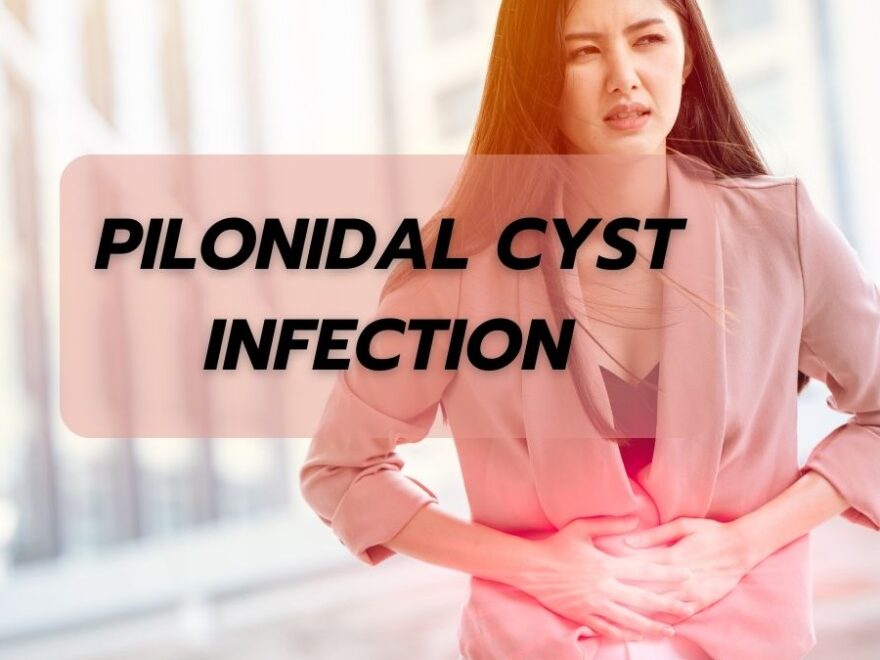Can the pilonidal cyst get infected? What are the common pilonidal cyst infection symptoms? Some people think of squeezing their pilonidal cyst in the way they do for pimples on their skin. However, remember this is not the appropriate way to heal pilonidal cysts. A pilonidal cyst is a debris and hair filled pocket.
Some at-home remedies can only alleviate your discomfort. They will not cure the disease permanently. You can contact a pilonidal expert to get the most effective treatment. Let us talk more about the signs of infected cysts and the treatment options.
How to detect pilonidal cyst infection
Not every pilonidal cyst patient suffers from infection. The most important step is to identify the infection symptoms to have the desired treatment.
In case your pilonidal cyst gets infected, you have a chance of experiencing swelling and pain in the affected part. You will also experience redness and tenderness in the part.
Drainage is another sign of the infected cyst infection. You may find a discharge of the foul-smelling thick substance with a yellowish tone. It indicates the secretion of the pus due to the cyst.
Some people with pilonidal disease suffer from fever. The adjacent tissues become warm because of the higher blood flow to the site.
Due to discomfort and pain, infected cysts may prevent you from lying down and sitting comfortably. They will also affect your regular activities.
You must not delay taking medical assistance to treat pilonidal cysts. If you have overlooked the pilonidal cyst issues, it will cause serious problems. For instance, infection may spread to other body parts, and there will be an abscess formation. Most commonly, healthcare specialists prescribe antibiotic medications to manage the infection. However, cyst drainage conducted by the pilonidal cyst specialist will also be effective in treating the condition. The experienced doctors will provide the right treatment that prevents further complications.
If you think infection has affected your pilonidal cyst, you can consult a doctor. Some specialists recommend surgery in case the medication does not work. There are surgical processes to remove bacteria and pus while draining the cyst. Local anesthesia is applied during the pilonidal cyst surgery.
Can you treat the pilonidal disorder at your home?
Some people think that only home treatment will be enough to manage their pilonidal cyst symptoms. However, you should not drain the cyst on your own. It may cause more infection if you cannot do it properly. If you have made a deeper cut, you cannot stitch the part without a doctor’s help. Still, there are some ways to reduce the discomfort from pilonidal cysts.
1. Castor oil
Due to its anti-inflammatory properties, castor oil helps you reduce pain and inflammation. Patients with pilonidal cysts can benefit from pilonidal cysts. This natural remedy will also accelerate the recovery from wounds. You have to use a cotton swab and dip it in the castor oil. Apply the castor oil at least 3 times every day.
2. Honey
Using honey is another home treatment option for your pilonidal cyst. This ingredient has antiseptic and anti-inflammatory properties to fight against infection. It will reduce your pilonidal cyst symptoms faster. A small amount of raw honey applied to the affected site will give you a remedy. Moreover, the honey is also effective in flushing out the toxins and pus from your wound.
3. Neem
Leaves from neem trees provide multiple benefits when applied externally or consumed. So, grind the leaves and apply the paste to the affected site for at least 20 minutes. Wash the part with some lukewarm water. Put some leaves in a bowl of water and boil it for a few minutes. Wait for a few minutes to let the solution cool.
4. Turmeric
Turmeric is also a highly beneficial component with the power to relieve your aching sensation and inflammatory signs. You may apply turmeric to the site by creating a paste. Make the paste of water and turmeric and apply it to your pilonidal cyst. When it is dry, you can rinse it with lukewarm water. You will find the result if you do it at least twice every day.
5. Aloe Vera
Aloe Vera is another safe solution for the skin issue caused by pilonidal cysts. Anti-bacterial and anti-inflammatory compounds in Aloe Vera are best for reducing your discomfort. It will also foster the pilonidal cyst healing process.
Pilonidal cyst causes you pain and other discomfort. So, you may try out these simple solutions for suppressing the symptoms.
Conclusion
If you have noticed any symptoms, you can contact the pilonidal expert. The surgeon will diagnose the condition and prescribe medications. In case the symptoms have become complicated, you have to undergo surgery. Surgery for pilonidal cyst infection is not much complicated, and you will recover within a few weeks.
The incision and drainage will reduce the risk of reoccurrence of the cyst. Especially young people who have pilonidal cysts for the first time may consider this treatment. In some cases, the surgeon will remove the cyst surgically. To know about the most effective treatment for the pilonidal cyst.

